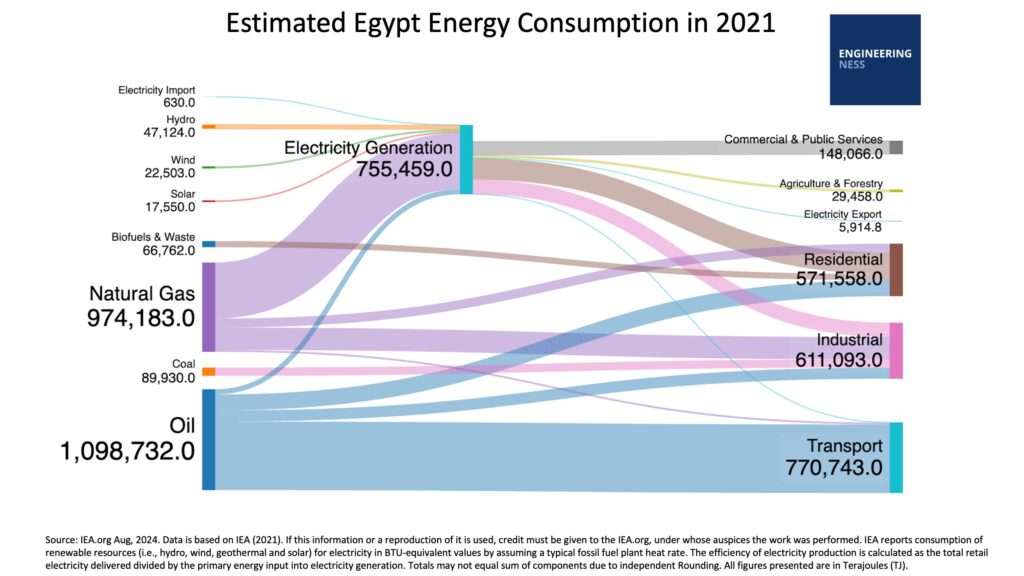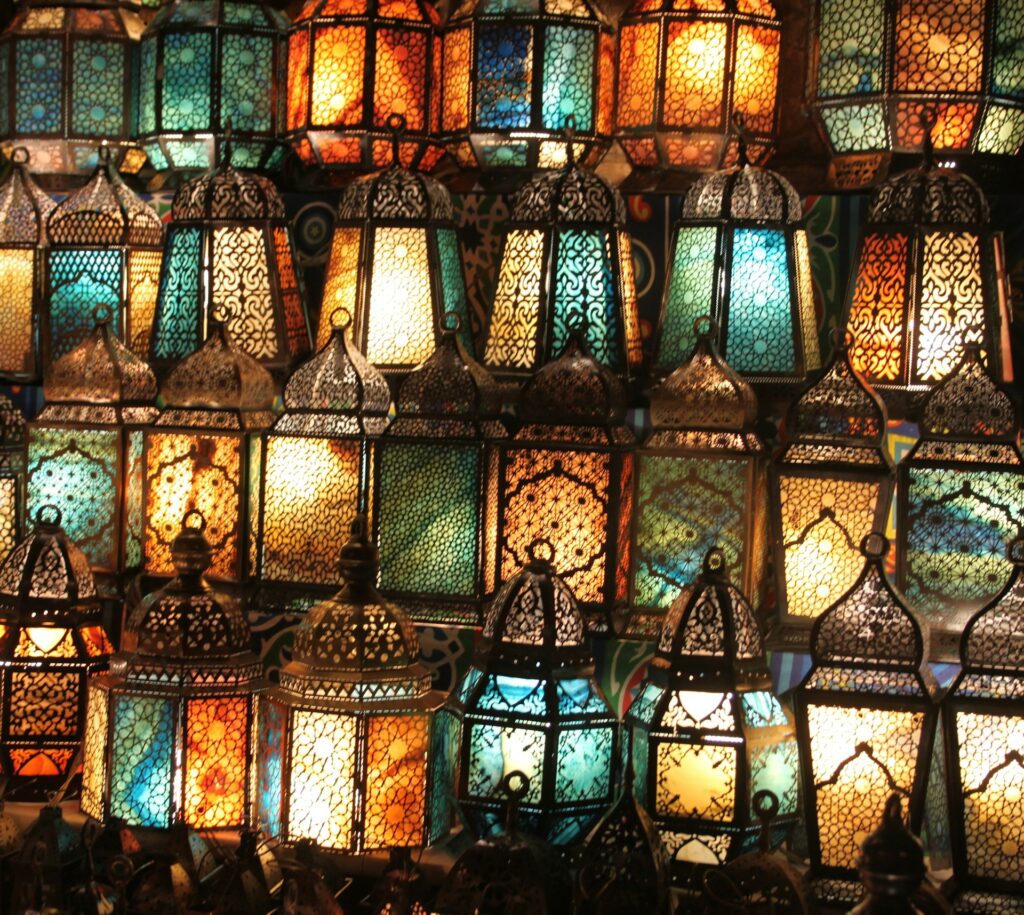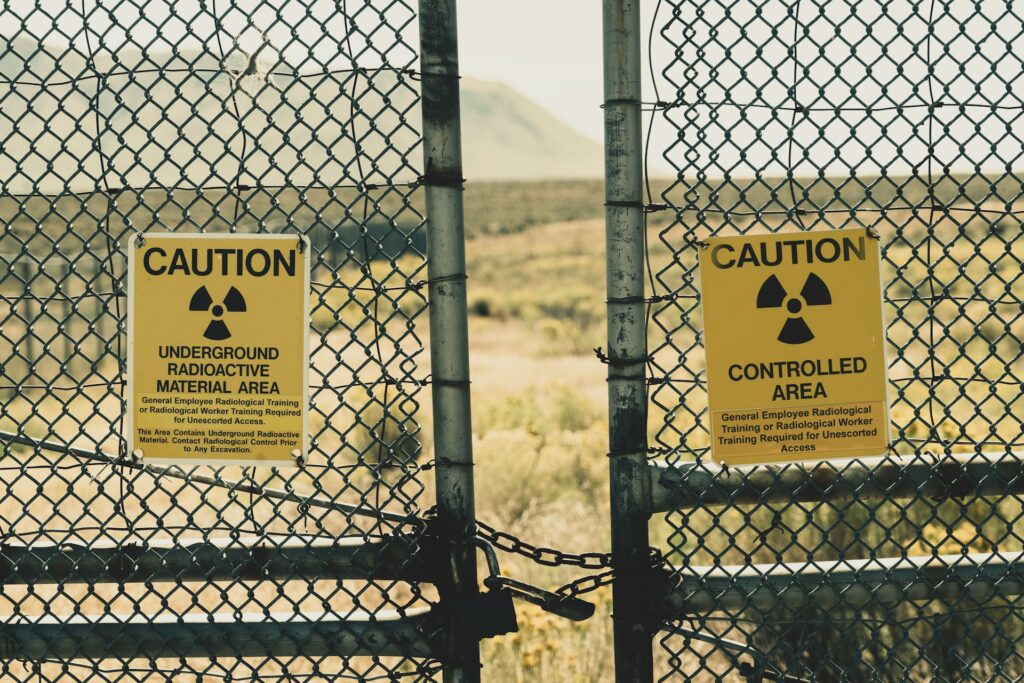The energy consumption figures from Egypt illustrate a story resonant for many developing countries; namely, that traditional sources of energy, especially oil and natural gas, continue to be the leaders. The Sankey diagram below depicts, in a striking manner, the reliance on oil and natural gas, which together create the majority of Egypt’s energy supply. Still, the data is layered with a complicated story; comprising advancement, difficulties, and an opportunity for change.

Egypts Current Energy Landscape: A Fossil Fuel Dependence
The IEA reports that Egypt’s energy consumption continues to be mainly dependent on fossil fuels, where natural gas (974,183 TJ) and oil (1,098,732 TJ) take the lead. Although the dependence has benefited both the industrial and transport areas of the country, this positions Egypt at risk, especially as market prices of fossil fuels widen and environmental effects become more alarming.
Ahmed Maher, an energy analyst from Egypt’s New and Renewable Energy Authority (NREA), points out that while natural gas has been a more “environmentally friendly” fossil fuel compared to coal, it still presents economic vulnerabilities. he says.
“As global prices shift, Egypt’s reliance on imported energy resources threatens long-term stability. Diversification is not just about sustainability—it’s about economic resilience,”
Egypt’s Renewable Energy Production and Consumption | Tapping Into Egypt’s Geographic Advantage
Egypt’s already bright energy outlook receives a boost from its renewable energy potential. With wide deserts and clear sunny skies, Egypt has the perfect conditions for producing solar energy. The country has, in fact, taken a few steps forward in this field, as 17,550 TJ came from solar in 2021. Just as well, hydroelectric power produced from the Nile River was 47,124 TJ, illustrating the dependence of Egypt on its Aswan High Dam.
Despite these positive steps, renewables remain a minor contributor in Egypt’s overall energy consumption. Hassan Allam, CEO of Hassan Allam Construction, notes,
“Egypt’s geographic location provides it with unparalleled solar potential, but we are still at the early stages. We need to see more aggressive policy support and investment in solar and wind if we are to truly shift the needle.”
Key Challenges Facing Egypt’s Energy Transition
There are bright signs of hope; still, advancing requires us to tackle substantial difficulties. Some of the most pressing issues include:
- Energy Supply-Demand Imbalance:
- With Egypt’s population and economic expansion, its energy needs are rising. Nevertheless, economic stresses arise because the nation’s energy supply has not been able to keep pace. The pressure is clear, especially within the residential sector, which used 571,558 TJ in 2021 which is about 24% of the total.
- Subsidies and Inefficient Consumption:
- Born from a legacy policy intended to foster economic growth, energy subsidies have resulted in inefficiencies in energy consumption. The existence of artificially affordable prices leaves consumers without a motivation to practice energy savings. Subsidies can mitigate immediate issues for a number of people, but they also block progress towards long-term sustainability. The European Investment Bank (EIB) endorses reducing these subsidies and which will drive the market to more energy saving techniques as well as informing the people about the critical nature of conservation.
- Infrastructure Limitations:
- In order to move towards a future powered by renewable energy, Egypt will have to bring its infrastructure up to date. The grid is, at this time, not sufficiently fit to manage the integration of major renewable energy projects. The problem is made worse by Egypt’s losses of electricity, as inefficient infrastructure leads to wasted energy.
- Political and Economic Hurdles:
- In spite of commitments from the government to grow renewable energy, barriers related to politics and economics have slowed the sector’s development. The private sector has been slow to participate, and numerous projects stall due to bureaucratic bureaucracy.

Looking Forwards | What Needs to Change For Egypts Energy Sector?
All experts and stakeholders agree that Egypt must take daring actions as it confronts these difficulties. Farouk El-Baz, a prominent geologist, believes that solar energy should take centre stage:
“By investing in solar, Egypt could achieve energy independence and move towards exporting renewable energy to close African and European nations.”
Besides, considerable funding in energy storage technologies will be important to offset the fluctuations associated with solar and wind energy. Localised energy grids may help to boost efficiency and lower losses. Several projects have already begun in Egypt, like the Benban Solar Park, which ranks as one of the largest solar installations in the world. This effort marks a hopeful move, yet for substantial effect, Egypt must continue to draw in foreign investment and support public-private partnerships that can quickly facilitate the rollout of renewable technologies.
The Sankey diagram tells a story of progress. However, it also underscores the need for urgency. Egypt is at a crossroads, where its reliance on fossil fuels must be balanced against the promise of renewables. While the potential for solar, wind, and hydroelectric power is immense, the road ahead requires decisive action, clear policy direction, and an infrastructure overhaul.
Egypt’s energy future hinges on how it navigates these transitions, both economically and environmentally. The question remains: how fast can Egypt move toward a more sustainable and self reliant energy system? The answer may well define the country’s energy outlook for decades to come.

Hassan graduated with a Master’s degree in Chemical Engineering from the University of Chester (UK). He currently works as a design engineering consultant for one of the largest engineering firms in the world along with being an associate member of the Institute of Chemical Engineers (IChemE).



